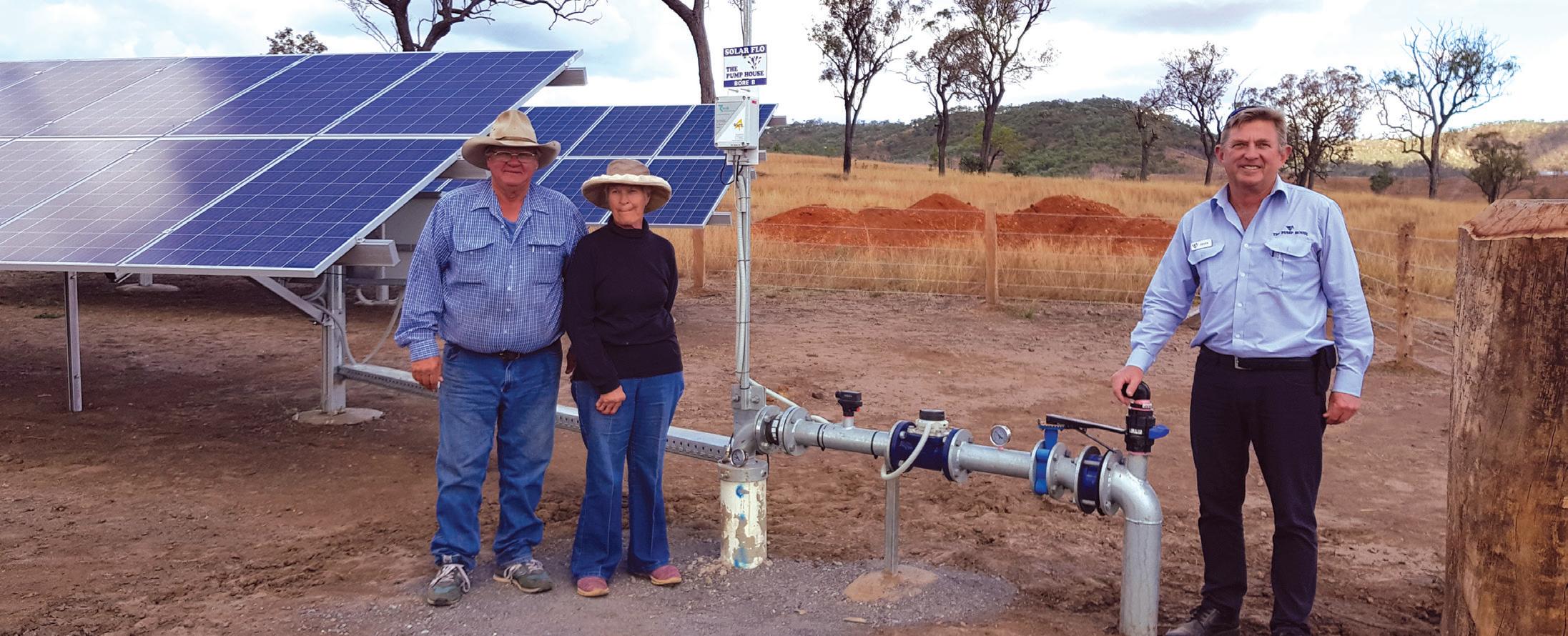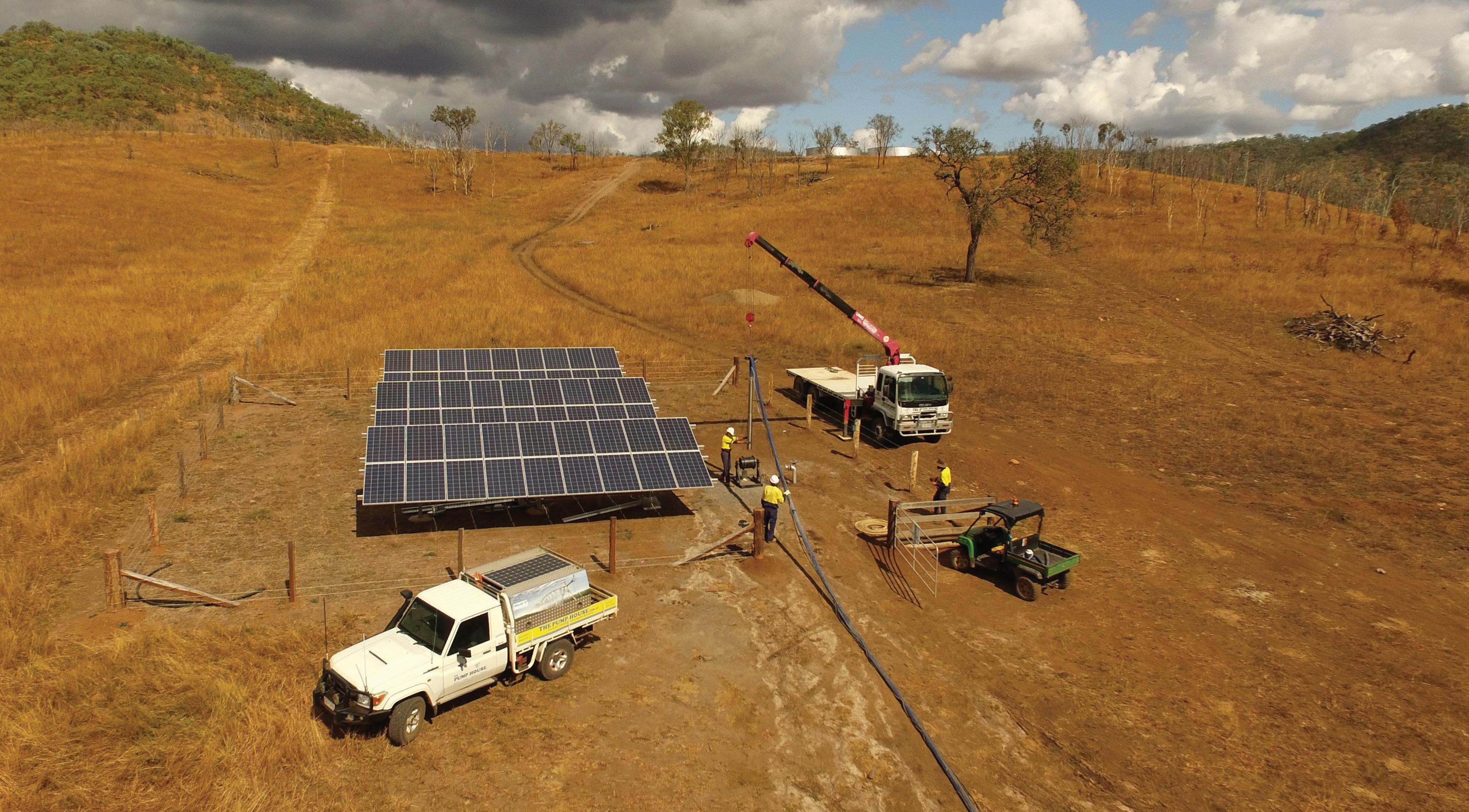
4 minute read
Technology: Rural
SOLAR SYSTEM CUTS PUMP COST TO ZERO
SNAPSHOT
• Cattle growers Rob and Jen Brooks had a vision to drought-proof their property near Gympie in
Queensland using an irrigation system that had zero running costs • The irrigation system was designed to be gravity fed • Pumps powered by solar panels transfer underground water to distribution tanks that gravity feed water to a pipe and riser system • The Brooks are now able to irrigate 35 ha of fodder crops without the need for –and cost of - power or council water.
Access to water and energy costs have become significant issues for the irrigation industry in Australia in the last few years.
Some irrigators are deciding to take matters into their own hands by controlling costs and water access as much as possible within the farm boundary.
Rob and Jen Brooks, who raise and fatten cattle on their property at Kilkivan near Gympie in Queensland, recently approached The Pump House and asked them to design an irrigation system with associated water storage pump capacity that would make them as independent as possible. Previously their enterprise was a dryland one.
The challenge they gave The Pump House was to create an irrigation system that drought-proofed the property, gave the Brooks flexible management control and minimised or eliminated ongoing energy costs for pumping.
According to Peter Chadband, owner of The Pump House, the key components of the system decided on were as follows: • solar pumps • solar panels • tanks to store water • new sprinklers • radio control system.
The first stage of this project has just been completed. Next is the installation of three more bores and the development of another 40 ha of irrigation.
Installation
The source for irrigation water is an underground supply. Rather than pump straight from this supply, it was decided that storage tanks would be installed, and gravity would do the work to distribute it to the irrigation system.
Four submersible pumps were installed at an average depth of 50 m to draw on the available bore water. They are powered by 206 solar panels, which enable water to be pumped to storage tanks at a higher elevation. The pump system has an inverter and pumps during daylight hours only. There are no batteries, but the system does have the option to be run by a genset during very overcast weather
Two large storage tanks - 375,000 L each – were installed at a higher elevation (36 m) above the cultivation and 300 m from the irrigation system. The water is then stored to irrigate the crops.
“All water is gravity fed so no power is required,” said Peter.
Peter Chadband (right) with Rob and Jen Brooks check out the solar panels installed to power transfer pumps.
The power source for the pumps is a 206-panel solar array.

Water pumped from underground is stored in two large tanks and gravity fed to the irrigation system 300 m below.

The pipe and riser irrigation system has 550 sprinkler heads. With 36 m of pressure available from the tanks and the target of 28 m required at the sprinkler nozzle, friction losses had to be minimal. Using a 200 mm mainline for the 28 L/sec flow of each irrigation block kept mainline friction to less than 2 m. The 100 mm valve and manifold loss was 2 m, and submain, lateral and fittings losses were calculated at 4 m.
Final testing of the system revealed that total friction losses were 4 m, well under the 8 m allowance and only 11.5 per cent of the total system pressure
Lastly, a radio control system was installed to operate the system via mobile phone or computer from anywhere (including overseas).
Peter said that the trickiest part of the project was being confident enough to trust the friction loss calculations to achieve the desired operating pressure at the sprinklers.
The bottom line
Rob said that he and Jen had a vision to drought-proof their property and that has been achieved with this project.
Once they realised they could access underground water they approached The Pump House about installing a solar pump system that would pump water during the day to two huge tanks up a hill and gravity feed it back down the hill to irrigate fodder crops.
“The other part of the vision was no running costs, and, thanks to The Pump House, that has now become a reality,” said Rob.
This project has ensured that Rob and Jen can irrigate 35 ha of fodder crops such as oats, lucerne, barley and corn without the need for – and cost of - power or council water.
The pipe and riser system is gravity fed with irrigation water from storage tanks located on a hill on the property.

Anne Currey, Irrigation Australia and Chris Pitcher, The Pump House










